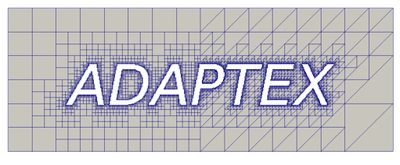
Duration
November 2022 to October 2025
Contact
Dr Daniel Caviedes Voullieme
Team leader Simulation and Data Laboratory Terrestrial Systems
Building 14.14 / Room 4010
+49 2461/61-4070
E-Mail
Dr. Lars Hoffmann
Head of division HPC in Applied Science and Engineering
Building 14.14 / Room 4010
+49 2461/61-1978
E-MailADAPTEX
Adaptive earth system modeling with significantly reduced computation time for exascale supercomputers
High-performance computing (HPC) is now one of the fundamental research methods in many scientific disciplines. High-performance computers have been reaching the exaflop performance class (at least 1018 operations per second) since this year. For applications to efficiently exploit the power of exascale systems, scalability must be improved on very large and heterogeneous systems. A variety of components are required for modern high-performance computing: from processors to data storage and file systems to software and algorithms. All these components also require new technologies and adaptations to specific applications and interfaces.
In this project, JSC has teamed up with the project leader DLR Institute of Software Technology, and a consortium consisting of the Institute of Geometry and Applied Mathematics at RWTH Aachen University, the Division of Mathematics of the University of Cologne, the DLR Institute for Atmospheric Physics, and Hydrotec to develop an open-source software framework for exascale-enabled computational fluid dynamics on dynamic adaptive grids and to apply it to the field of Earth System Modelling (ESM). By merging individually specialized HPC software libraries and extending them to heterogeneous exascale computer architectures, the scalability and resource efficiency of current and future ESM applications will be significantly improved.
Through the innovative use of adaptive grids, the project will enable efficient simulations on state-of-the-art heterogeneous computing systems of the exascale class. The solution time (time to solution) is to be greatly reduced in the project, which will lead to higher practicability. As a result, climate and earth system simulations can be computed even more accurately, quickly and energy-efficiently in the future, also for industrial purposes.
The JSC team (with participation from SDL Climate Science and SDL Terrestrial Systems) will focus on the implementation of two use cases of the adaptive meshing technology, applied to the atmospheric particle tracking MPTRAC code, and to the SERGHEI shallow water solver. Additionally, JSC will support both GPU implementations and the performance assessment of all the other uses cases in the project.
Through the SDL Terrestrial Systems, this activity is also supported by the HPSC TerrSys Competence Centre of the Geoverbund ABC/J.

